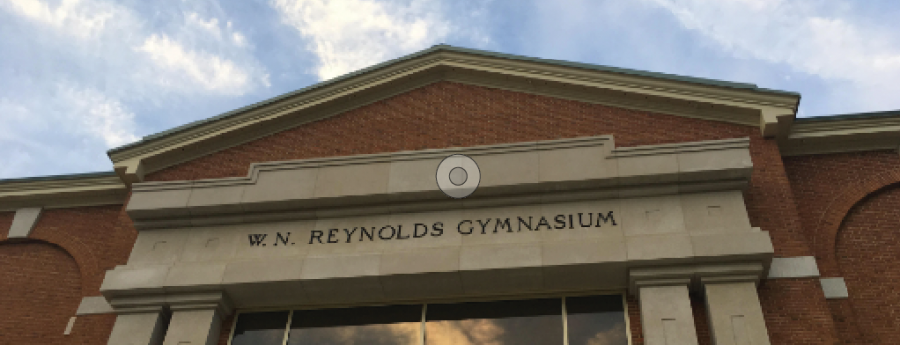Those looking to catch up on Netflix or surf social media while de-stressing after class can now turn to the renovated Reynolds Gym, which boasts fitness equipment with Internet access.
The second phase of the $58 million Reynolds Gym transformation project opened its doors to the campus community after more than a year of construction to reveal a high-tech fitness and wellbeing center that triples the amount of workout space on campus.
“The increased size will certainly help students feel more comfortable about going to the gym,” said junior Saquaan Revis.
The building has 180,000 square feet of lounge space, group fitness space, two multipurpose activity courts, a bouldering and climbing wall and new locker rooms and showers.
“The gym has been optimized to really make working out more of an option and less of a time commitment because of increased availability and convenience,” said sophomore Josh Nnaji.
Senior Sebastian Irby agreed.
“The old gym was so cramped when you were in the weight room,” Irby said. “I felt like I never really had space or that I was always in someone’s way or needed to workout faster so someone else could use my weights after me.”
According to university research, the number of students participating in fitness and recreation programs at Wake Forest was already greater than many universities with much larger enrollments before the new facilities opened. More than 60 percent of undergraduate students reported using cardio equipment one or more times a week, and more than half of undergraduate students reported lifting weights at least once a week. These numbers are expected to grow in response to the increase of available fitness space.
“I think people are already enticed simply because it’s a brand new facility and super nice,” Irby said. “I also think that people feel more comfortable now that there is a lot more room for us all to spread out.”
The new equipment includes treadmills, incline trainers, ellipticals, step machines, upright bikes, recumbent bikes and rowing machines. Interactive data screens allow personalization and tracking of workouts, and a functional training space offers equipment such as sleds, kettlebells, medicine balls, battle ropes and stability balls.
The Reynolds gym was originally built in 1955, and the overhaul of the facilities involved adding steel infrastructure to the building to create more open spaces. The Sutton Center addition was completed as the project’s first phase in 2015. The buildings are connected by a floor-to-ceiling glass atrium rather than the original brick to allow as much natural lighting as possible.
According to research conducted by the university in planning stages for the renovated facility, Wake Forest wanted Reynolds to be “more than a gym.” As a result, social and wellbeing spaces were prioritized alongside fitness spaces when redesigning the building. The new Office of Wellbeing will offer massage therapy, a peer educators program and wellbeing coaching, and includes a portable kitchen for cooking demonstrations and nutrition workshops and classrooms for training and programming.
Many students on campus, especially women, have expressed that while the weight room can be an intimidating place, training in the new space involves less pressure.
“I do think that the gym is very open and less intimidating as a result,” Irby said. “I feel a lot less judgement now that there is so much more space.”
Student Health Service has also been relocated to its previous location on the side of Reynolds Gym, and will be expanded during the final phase of the renovation and transformation project scheduled for completion in March, 2018.
This third phase will also add an expanded indoor pool, a varsity gymnasium for the volleyball team including locker and training spaces,, group fitness studios, a cycling studio, multipurpose spaces and offices for intramural and club sports and additional classrooms.
The renovations are overseen by Frank L. Blum Construction Company.
















